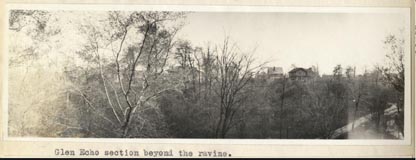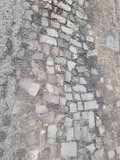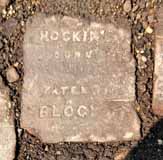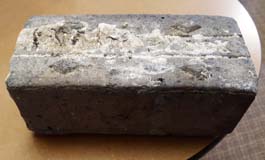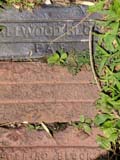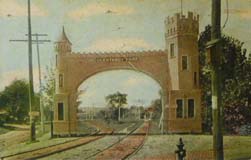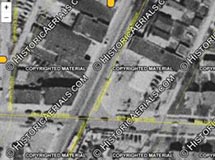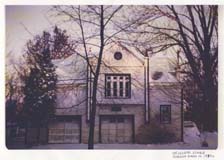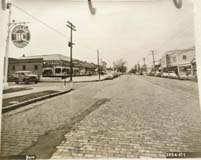 These lovely pictures are of the Albrecht Floral Shop at 2703 River (or Olentangy) Road–the intersection of Dodridge and Olentangy River Road, looking north.
These lovely pictures are of the Albrecht Floral Shop at 2703 River (or Olentangy) Road–the intersection of Dodridge and Olentangy River Road, looking north.
According to librarian Cindy at the Columbus Metropolitan Library, the flower shop went through several hands in the 1930s.
In 1930 it was owned by Flora Hess.
In October 1930, a Columbus Dispatch article ran in the Columbus Dispatch detailing that Flora was going to lease the property to Lawrence R. Alwood, and he would run it as the Orchid Flower Shop. It appears that way in the 1931 business directory.
From 1932 to 1937 the directory lists the location as the Grove Flower Shop, with owner Milton A Oliver also listed at the location.
In 1938, it appears as the Grove Floral Company, still with Milton A Oliver.
In 1939 it is the Irene Flower Shop with John K. McCoy also at the address.
In 1940 it is listed as William Oliver, florist
 In 1941 it finally appears as Albrecht Florists.
In 1941 it finally appears as Albrecht Florists.
After that it drops from the directories, either because it closed or because for some reason the directory did not cover the area for those years.
Either way, by 1948 the address is listed as Buckeye Heating, Inc.
Cindy found a parcel sheet for what she believes is the property in question. The parcel sheet shows the greenhouse listed as well as a brick building.
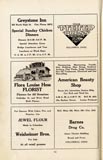 There is an ad for Flora Louise Hess, Florist in a 1925 Columbus Women’s Club cookbook that features an illustration of the building matching these photos.
There is an ad for Flora Louise Hess, Florist in a 1925 Columbus Women’s Club cookbook that features an illustration of the building matching these photos.
Flora Hess sold the property to the state in 1932. She lived in a house close by at 2637 Olentangy River Road, however. In 1968 Johnny Jones wrote an article about an antique sale at the Hess homestead.
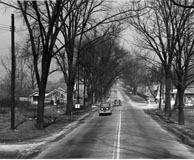 Across the street from the flower shop is a gas station. The Moosehead Filling Station and Moosehead Tavern was across the street at 2696 Olentangy Road as early as 1937. It advertised selling H-C gas; H-C was the first high-octane gasoline. In 1926, Sinclair leapt ahead of most of its competitors with H-C, the industry’s original high-octane premium gasoline for motorcars. The 72-octane auto fuel, developed at its Houston refinery, was better than anything then marketed (Lindbergh’s flight to Paris the following year was on 73-octane gasoline). H-C stood for “Houston Concentrate,” though some advertising men called it “High Compression.”
Across the street from the flower shop is a gas station. The Moosehead Filling Station and Moosehead Tavern was across the street at 2696 Olentangy Road as early as 1937. It advertised selling H-C gas; H-C was the first high-octane gasoline. In 1926, Sinclair leapt ahead of most of its competitors with H-C, the industry’s original high-octane premium gasoline for motorcars. The 72-octane auto fuel, developed at its Houston refinery, was better than anything then marketed (Lindbergh’s flight to Paris the following year was on 73-octane gasoline). H-C stood for “Houston Concentrate,” though some advertising men called it “High Compression.”
The Moosewood Tavern was apparently a trouble spot; this Columbus Dispatch newspaper article documents one incident of rowdiness.
[Photos courtesy of the Franklin County Engineers. Articles are from the Columbus Dispatch. Research on these photos and news items mostly came from Cindy at the Columbus Metropolitan Library Local History & Genealogy Desk; thank you Cindy! ]
